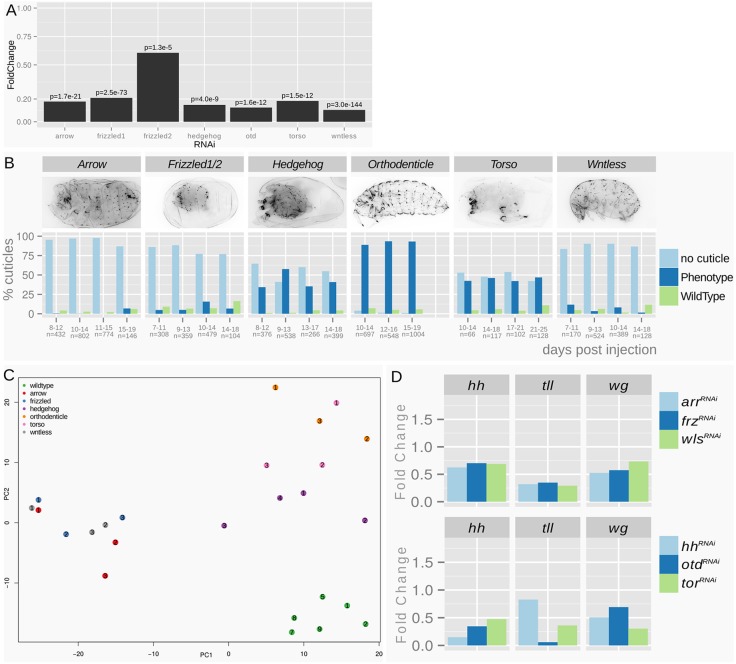Fig. 3.
Quality controls of the RNA-seq experiment. (A) RNAi treatments resulted in a transcript reduction of 80-90% for the single knockdowns. In the double RNAi, Tc-frizzled1 is reduced by 80% and Tc-frizzled2 by 40%. Shown are fold changes of transcript levels compared with the wild type, with Benjamini Hochberg adjusted P-values (false discovery rate). (B) Quantitative cuticule phenotype analysis of siblings of the sequenced animals taken from the same batch. The penetrance of the treatment is shown by the high portion of phenotypic animals (‘no cuticle’ phenotypes derive from severely affected animals that stop embryogenesis prior to cuticle formation). Specificity of the treatment is shown by the cuticle analysis, where the expected morphological phenotype was observed. The analysis was repeated on subsequent days showing the persistence of the RNAi effect. (C) PCA of wild-type and knockdown samples confirms clustering of the treatments. (D) Fold change values of target genes with anterior and posterior expression domains. Note that Tc-hh is reduced to ∼10% in the Hh pathway knockdown but only to ∼70% in the Wnt pathway knockdowns. Assuming that Tc-hh expression is evenly distributed between head and GZ domains and that Wnt knockdown does not interfere with Tc-hh head expression, the Tc-hh knockdown of the GZ would be to ∼40% of the wild-type expression.

